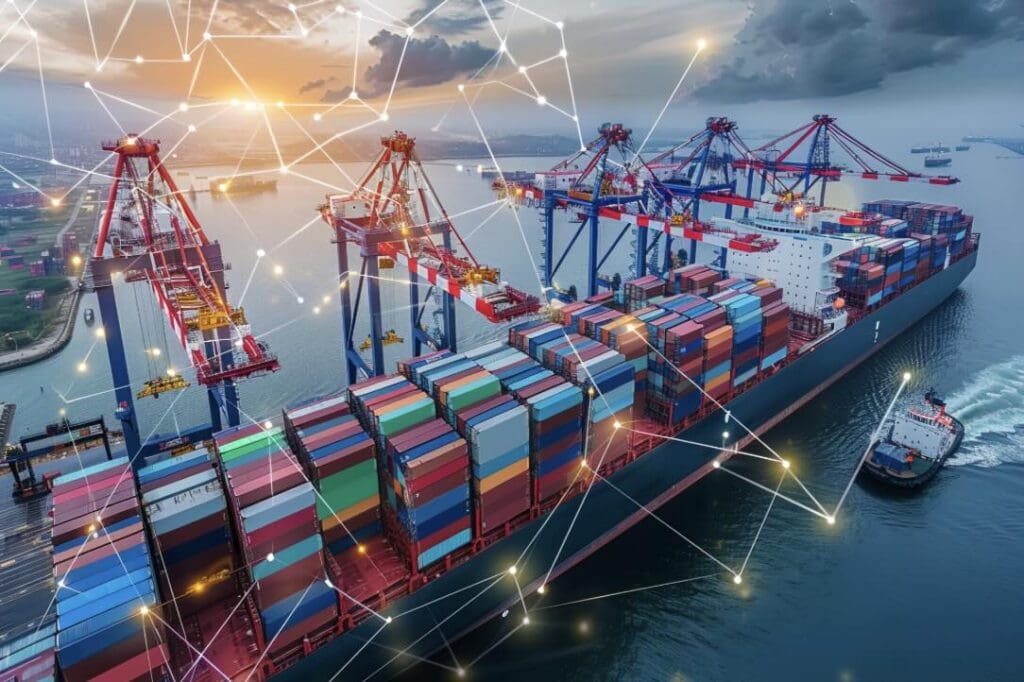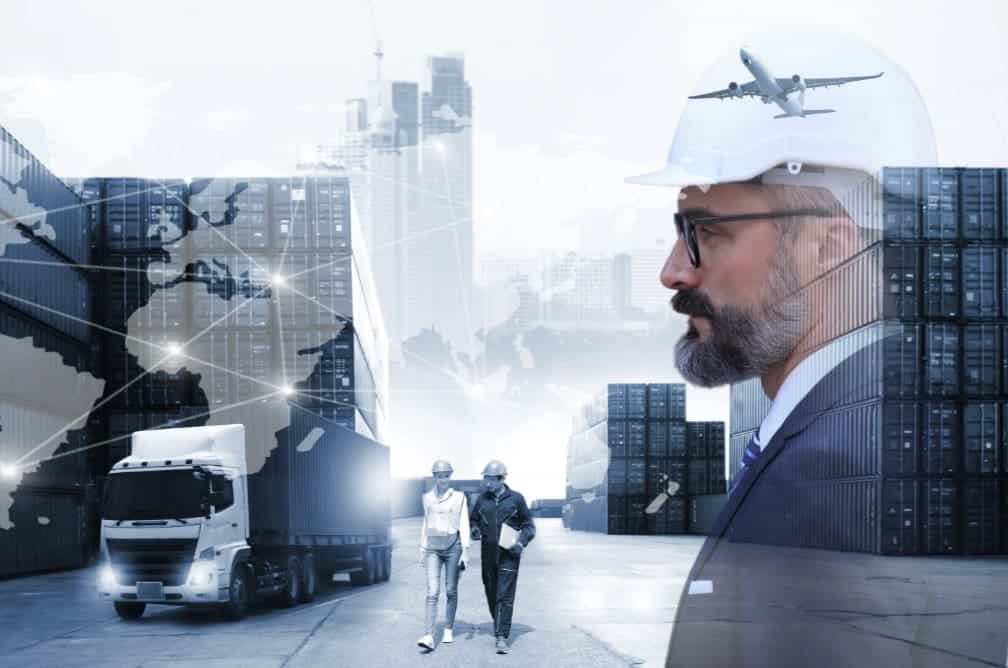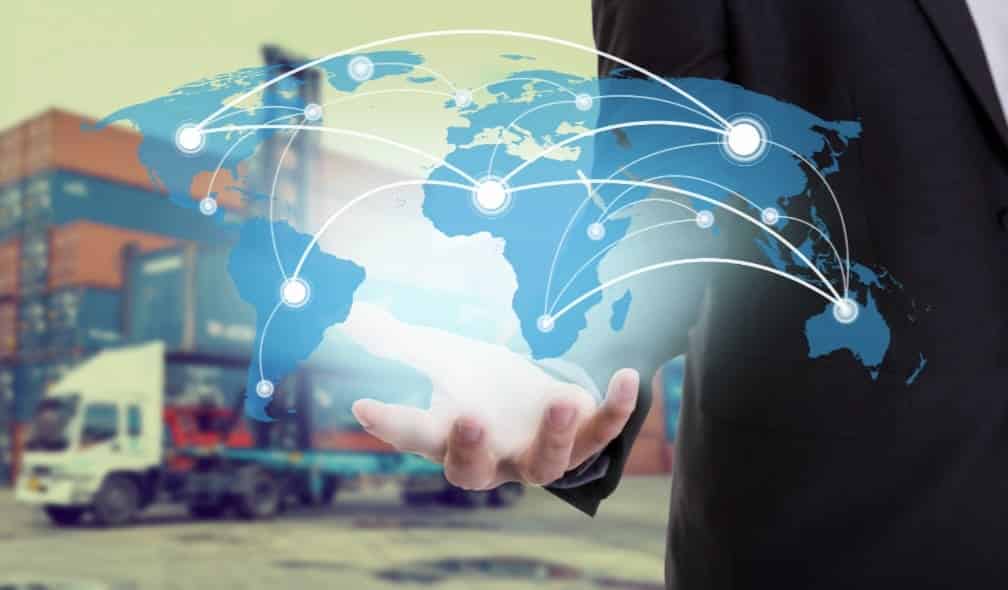How can the latest gadget or fashion trend magically appear on store shelves worldwide? Well, it’s not magic—it’s the work of an intricate and dynamic global supply chain. Think of it as the ultimate behind-the-scenes network that strings together a product’s steps before landing in your shopping cart.
From the bustling factory floors to the speedy delivery trucks zipping down highways, every move in the global supply chain is crucial. Let’s plug into this complex web and uncover the essentials that keep our modern world spinning. Buckle up; it’s going to be an enlightening ride!
Table of Contents
- The Structure of the Global Supply Chain
- The Impact of Technology on the Global Supply Chain
- Challenges in the Global Supply Chain
- Sustainability and Ethical Practices in the Global Supply Chain
- The Triple R Mantra: Reduce, Reuse, Recycle
- The Future of Global Supply Chains
- Related Content
The Structure of the Global Supply Chain
What Keeps the Global Supply Chain Running Smoothly?
Imagine a giant machine. This machine has gears, levers, belts, and countless parts, all moving together. That’s like the global supply chain! It’s a vast network that makes sure products move from producers to consumers all around the world. But how does this complex system keep running smoothly? Let’s dive in and explore the secrets to a slick supply chain.
First off, communication is critical. For example, you can’t win a three-legged race without being in sync with your partner, so businesses and suppliers must be on the same page. They use tech tools like the Internet of Things (IoT) and cloud-based platforms. These let them instantly share data, meaning they can react fast to any hiccups, like a delayed shipment.
Next, let’s talk about flexibility. Sometimes, things go wrong—a factory might have to shut down, or a ship might get stuck (remember that big boat blocking the Suez Canal?). A smooth supply chain can adapt to these setbacks. Companies build buffer stock or find different transportation options so that the flow of goods doesn’t stop.
Planning is another big one. Businesses forecast what they need using historical data and some pretty intelligent algorithms. It’s like having your crystal ball to prep for the holiday rush or predict that hot new gadget everyone will want. This way, they can line up all the necessary materials and labor without scrambling at the last minute.
Efficiency is another buzzword. Just think—if you’re driving from Chicago to New York, you wouldn’t zigzag all over the map. That’s a waste of time and gas! The global supply chain is the same. Companies focus on reducing waste and excess inventory, saving energy, or optimizing delivery routes.
Lastly, relationships make a world of difference. Like you’re friendly with your favorite coffee shop owner (bonus points for freebies, am I right?), companies form solid partnerships with suppliers and logistics providers. The machine keeps humming when they trust each other and work together through thick and thin.
All these elements – communication, flexibility, planning, efficiency, and solid relationships – are the unsung heroes of the global supply chain. They make it possible for your online orders to show up at your doorstep or for stores to have their shelves stocked with your favorite snacks. So there you have it, the inside scoop on what keeps the global supply chain moving smoother than a hot knife through butter. Keep these in your back pocket the next time you marvel at how that cool gadget from halfway around the world landed in your hands!

The Impact of Technology on the Global Supply Chain
Tech Innovation: The Drive Behind Enhanced Supply Chain Management
Imagine having a crystal ball that predicts precisely what your customers will want when they want it and the most cost- and time-efficient way to deliver it. In a sense, that’s what tech innovation is bringing to the world of supply chain management.
Let’s explore the world of smart logistics, where the intersection of technology and traditional supply chain practices is revolutionizing efficiency and productivity.
Real-Time Tracking and Analytics:
Real-time data tracking has transformed the supply chain landscape. With IoT (Internet of Things) devices, companies can now monitor their shipments in real-time, assessing everything from location to temperature. These detailed analytics enable managers to make proactive decisions, enhancing the security and reliability of deliveries.
Automated Warehouses:
Robots and automated systems in warehouses are no longer a thing of sci-fi. They’re here and streamlining operations like you wouldn’t believe. By reducing human error and increasing picking and packing speeds, these robotic systems make warehouse management look like a futuristic ballet of efficiency.
Predictive Maintenance:
Breakdowns and delays can cause a domino effect of inefficiency across the supply chain. However, predictive maintenance powered by AI (artificial intelligence) helps anticipate maintenance needs before a breakdown occurs. This means less downtime, more delivery punctuality, and much happier customers.
Artificial Intelligence:
AI is the brain behind the brawn. It enables sophisticated demand forecasting models that accurately predict market changes and customer needs. This intelligence allows companies to stock smarter, reduce waste, and swiftly respond to market shifts.
Blockchain Technology:
Trust is pivotal in supply chain management. Blockchain, a digital ledger technology, is increasing the transparency of transactions. It enables all parties to trace the product lifecycle, from origin to shelf, thus boosting confidence among consumers, suppliers, and retailers.
Last-Mile Delivery Innovations:
The ‘last mile’ often poses the most significant challenges — it’s complicated and can be costly. Innovations in this space, such as drone deliveries or route optimization software, are redefining the efficiency of getting the final product into the customer’s hands.
Supply Chains in the Cloud:
Cloud computing is the unsung hero of supply chain coordination. It offers a centralized platform for information management, making it easier to share updates and collaborate with stakeholders worldwide. This means improved response times and reduced barriers to communication.
Modern supply chains are becoming models of efficiency, fueled by technological advancements that seemed unimaginable just a few years ago. As we continue to embrace these innovations, we create a system that’s less about moving things and more about connecting data, people, and processes in the most innovative way possible. For businesses looking to stay ahead, investing in tech innovation is not just an option — it’s necessary to maintain competitiveness in an ever-evolving market.
From drones humming above delivering packages to AI-driven forecasts that ensure shelves are never bare, tech innovation is not just powering supply chain efficiency; it’s reimagining it entirely. The future of the supply chain isn’t coming; it has already arrived, and it’s time to step into it.

Challenges in the Global Supply Chain
Global supply chains have become the backbone of the world economy, but they’re not without their challenges. Let’s examine some of those hurdles that keep logistics managers up at night.
Trade Regulations and Tariffs: Picture this: You’ve got a perfect plan, and everything’s running smoothly. Suddenly, trade laws shift, and it’s chaos! New tariffs or quotas can emerge overnight, affecting how goods move across borders. Companies must stay alert and adaptive or face delays and extra costs that can ripple through the entire supply chain.
Transportation Capacity Crunch: Here’s a real head-scratcher – even if you manage to juggle all the rules, there’s still the issue of moving your goods. With limited transportation options and fluctuating fuel costs, finding space on a cargo ship or a truck can be like snagging a hot ticket concert – nearly impossible. This scenario often leads to increased shipping costs and, in turn, pricier products.
Geopolitical Instability: Have you ever tried to assemble a puzzle when the pieces keep moving? That’s what dealing with geopolitics in supply chains is like. Political unrest or tension between countries where supply chains operate can cause major disruptions. Companies must have strategies to tackle this uncertainty or risk getting caught off guard.
Environmental Concerns: Being eco-friendly isn’t just a trend; it’s a necessity. But green regulations can spark big changes in how supply chains function. Whether trimming carbon footprints or managing waste, companies must incorporate sustainable practices. Falling behind on these green moves isn’t just bad for the planet—it can be bad for business, too.
Labor Issues: Here’s the deal: a supply chain is only as good as those running it. Workforce problems like strikes, skill shortages, or health crises (think global pandemics) can bring a smooth operation to a grinding halt. Companies should nurture their workforce and watch for any trouble in the labor market.
Cybersecurity Threats: In a world where data is king, cybersecurity is the castle’s guard. As supply chains have gone digital, the threat of cyberattacks has skyrocketed. A breach can lead to stolen data or even shut down operations. That’s why keeping digital defenses strong and information locked up tight is necessary for modern supply chains.
Consumer Demands: Lastly, let’s talk about us – the customers. We’re a picky bunch. We want our products to be faster, cheaper, and more personalized. Adapting to the lightning-fast pace of consumer demands can be a tall order for supply chains already navigating a maze of other hurdles.
There you have it—the hurdles global supply chains face are as varied as they are challenging. Navigating these obstacles requires quick thinking, solid strategy, and a willingness to adapt to whatever the world throws next. It’s about staying on your toes and moving goods, no matter what!

Sustainability and Ethical Practices in the Global Supply Chain
Rethinking Packaging: The Key to a Greener Touchpoint
Picture the mountains of packaging you encounter in every product you buy — we’re swimming in a sea of the stuff! But the upside? There’s loads of room to innovate. Shift to biodegradable materials, and we’re talking severe game-changer. Packaging that doesn’t just go “poof” but safely returns to the earth? That’s pure gold for sustainability. And let’s not forget reusability. We are designing packaging with more lives than a cat can transform from a one-hit-wonder to a recurring player.
Go Local: Reducing Footprints by Shrinking Distances
Sourcing locally isn’t just trendy — it can slice down travel miles like a hot knife through butter. When stuff doesn’t have to cross seven seas to reach you, we cut out a hefty chunk of emissions. This intelligent move doesn’t just color your supply chain green; it also pumps life into the local economies. Think tomatoes grown and loved in your backyard — fresher, tastier, and oh-so-friendly to Mother Nature!
The Triple R Mantra: Reduce, Reuse, Recycle
It feels like it’s been around since dinosaurs roamed the earth, but the three R’s still hold the fort regarding sustainability. Less waste means more space in our landfills and fewer sad polar bears. By trimming down materials, upcycling what we can, and turning old into new, we aren’t just saving pennies; we’re saving the planet. This mantra’s a keeper: simple steps, significant impacts!
Eco-Minded Design: Built from the Ground Up
Sustainability should not be an afterthought—it’s got to be front and center in the design phase. Products planned with their end-of-life in mind mean we’re thinking ahead, setting up a circular economy where everything has a place in the never-ending loop. No waste, just endless cycles of use—how cool is that?
Clean Energy Revolution: The Power(ing) Move
Postcards from a coal-powered past are so passé. Renewable energy’s where it’s at. Solar, wind, hydro — take your pick, and let’s power our supply chains with that green goodness. It doesn’t just sound cleaner; it is. Imagine warehouses basking in solar power and electric trucks hustling up and down the highways — that’s the future beckoning us, folks.
Education and Collaboration: Sharing the Green Dream
Ever heard “sharing is caring”? Well, it’s time to take that to heart in the supply chain world. Training all hands on deck about sustainability means we’re all rowing the boat in the same direction — toward greener horizons. And when we lock arms with others in the industry, exchanging ideas and pushing forward together, suddenly, going green doesn’t seem like such a solo trek.
Monitoring and Certifications: The Proof in the Pudding
Trust is good; proof is better. With third-party certifications and monitoring, we’re not just talking the talk; we’re walking the walk. These badges of honor are like gold stars, telling the world, “Hey, we mean business about being eco-fabulous!” It isn’t just about looking good; it’s about being transparent, honest, and genuine blue — or green, in this case.
So, while we love those extra bucks from our side hustles, let’s not forget to inject a bit of that hustle into making our supply chains leaner, greener, and meaner (in an excellent way). After all, our planet’s not a rental; we must keep it in top-notch shape for the next generation of hustlers, right? Go forth and be sustainably savvy!
The Future of Global Supply Chains
Navigating the Future: A Glimpse Into Tomorrow’s Global Supply Chains
Hopping onto the future of global supply chains feels like strapping in for a rollercoaster ride, right? Hold onto your hats, folks, because the twists and turns coming up are enough to keep any savvy business player on their toes.
We’re talking about a world where technology isn’t just a tool; the engineer, the conductor, and the track inspector are all rolled into one. Digital Twins, for instance, will be the new best buds for supply chain managers. Imagine having a virtual replica of your supply chain, running simulations to test out what-if scenarios. Talk about style and substance!
While we’re on digital mastery, let’s not forget the rise of the Internet of Things (IoT). Picture this: every pallet, package, and product buzzing with sensors, chitchatting in real-time. It’s like every item posts a status update on where it’s at and how it’s doing—no more hide-and-seek with your inventory!
Drones and autonomous vehicles are zooming into the picture, too. Soon, delivering packages could be as smooth as your morning drive-thru coffee run—fast, efficient, and mighty excellent. Plus, it’s not just about getting packages to your doorstep. It’s about doing it without clogging the streets and polluting the skies. Now, that’s what we call a win-win!
Technology isn’t the only game-changer. There’s a whole social side to the supply chain saga. Customers aren’t just buying products; they’re buying the story behind them. They want ethical sourcing, fair trade, and a pat on the back for being responsible consumers. So, transparency isn’t negotiable anymore—it’s the entry price.
Have you ever heard the saying “knowledge is power”? Skilling up is the name of the game in supply chains, too. Automation might splash, but the human touch is steering the ship. Upskilling the workforce is crucial because, let’s face it, even robots need a team of humans to ensure they play nice.
Cash flow is king; let’s just say it’s getting a blockchain boost. Intelligent contracts are doing away with the tedious back-and-forth and slashing through red tape like a ninja. Faster transactions, fewer headaches, and airtight security? Sign us up!
On the flip side, there’s no candy-coating it; risks lurk around every corner. It’s like dodging asteroids in a spaceship—cyber threats, trade wars, climate surprises. Supply chain pros will need nerves of steel and plan B, C, and D tucked in their back pockets.
And, rounding things up with an eye on Mother Earth, green energy is gaining serious traction. Solar-powered warehouses aren’t just a pipe dream; they’re becoming a sunny reality. Adopting green logistics isn’t just about getting brownie points for being eco-friendly; it’s about powering the supply chain sustainably.
So, without a crystal ball, making predictions might seem like a hit-or-miss affair, but here’s the deal: The road ahead for global supply chains is paved with innovation, paced by digital speedsters, lined with ethical guardrails, and powered by a green light that’s all about sustainability. Sorting out this complex puzzle is no child’s play, but with agility and smarts, the pieces will fit together for a picture-perfect supply chain future. It’s all about staying sharp, friends—ready to pivot, adapt, and zoom ahead!

As we’ve seen, the global supply chain is like a mega-puzzle with pieces scattered worldwide. When these pieces click together perfectly, we quickly get everything we want and need. But it’s not just about getting goods from A to B. It’s also about being smart and kind to our planet while doing so.
Companies are constantly crafting clever ways to overcome challenges and smooth out the supply chain ride, always with an eye on the horizon for what’s next. Like assembling a puzzle with friends, tackling supply chain issues is a team effort—and the picture it creates constantly changes. Ready for the next piece of the puzzle?
If you are interested in seeing how Mondoro can help you with your supply chain – we would love to talk to you about how we can help you and be part of your global supply chain.
Find out more about how Mondoro can help you create, develop, and manufacture excellent home decor and home furniture products – don’t hesitate to contact me, Anita. Check out my email by clicking here or become a part of our community and join our newsletter by clicking here.
Mondoro gives out a FREE Lookbook to anyone interested. You can receive a copy of our latest Lookbook by clicking here.
Listen to our Podcast called Global Trade Gal. You can find it on all major podcast platforms. Try out to listen to one of our podcasts by clicking here.
Subscribe to our Mondoro Company Limited YouTube Channel with great videos and information by clicking here.
Related Content
What Are The Major Benefits Of Strategic Sourcing?
Never underestimate the proper use of the strategic sourcing process in your supply chain. Strategic sourcing is a significant benefit to all stakeholders within the supply chain. Strategic sourcing forces all stakeholders to look at the supply chain strategy in detail. Strategic sourcing helps to eliminate any potential risks or problems.
You can discover more by reading What Are The Major Benefits Of Strategic Sourcing? by clicking here.
Seven-Step Strategic Sourcing Process Explained
A seven-step strategic sourcing strategy will help companies succeed when procuring a product or a commodity. If companies take the time to go through each of the seven steps, this will help them to ensure they are successful with their sourcing needs.
You can find out more by reading our blog, Seven-Step Strategic Sourcing Process Explained, by clicking here.
Product Sourcing and Strategic Sourcing Explained
Product sourcing is when you source or look to find a supplier for a product you need. Strategic sourcing is strategically sourcing products. Strategic sourcing is not the lowest purchase price but the lowest overall cost. Product and strategic sourcing are very similar, but strategic sourcing is sourcing with a plan.
You can learn more by reading Product Sourcing and Strategic Sourcing Explained by clicking here.

